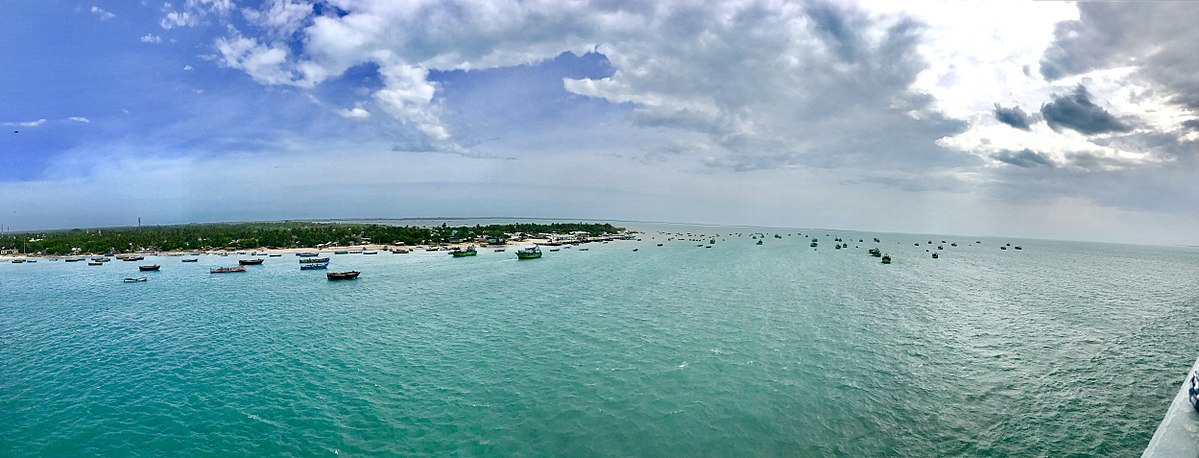
The last deglaciation period (∼18–10 kyr BP) presents a transition from the last glacial stage to warm interglacial, accompanied by an increase in global temperature, a rising sea-level, and melting ice volume. During the last deglaciation, the atmospheric CO2 increased rapidly from 180 to 265 ppm. To understand the mechanism that involved in the deglacial transition of atmospheric CO2, it is important for us to deal with the sharp increase of atmospheric CO2 in modern times.
In the ocean, dissolved rare earth elements (REEs) are derived from continental inputs, mainly through river discharge, dissolution/scavenging of lithogenic particles transported by rivers and winds, and “boundary exchange” with continental margin sediments. Nd mainly exists in a dissolved form in seawater (90 to 95 %), with a concentration of about 10-12 g/g, which increases with water depth. Dissolved εNd is not homogenous in the ocean due to the short estimated residence time of Nd in the ocean (from 360 to 700 yrs) (Frank, 2002; Tachikawa et al., 2003; Siddall et al., 2008) compared to the global turnover time of the deep ocean (about 1500 yrs) (Broecker and Peng, 1982).
Numerous recent studies have demonstrated the great potential of Nd isotopic composition (143Nd/144Nd) applied to seawater samples, as well as to authigenic phases or biogenic carbonates of marine sediments, to establish present and past hydrological changes of the ocean (Van de Flierdt et al., 2004; Rutberg et al., 2000; Piotrowski et al., 2005, 2008; Robert et al., 2010; Copard et al., 2010; Colin et al., 2010). This relatively new proxy is currently well developed and is widely used by the paleoceanography community.
Based on this method, vice prof. Zhaojie Yu from IOCAS, China, developed a deeply and productively cooperative study with several French research partners from Université Paris-Sud, Laboratoire des Sciences du Climat et de l’Environnement, Institut de Physique du Globe de Paris-Sorbonne. First, they measured dissolved Rare Earth Element concentrations in the Bay of Bengal using seawater samples obtained from an MD12 cruise. They found that MREE/MREE* ratios in the BoB waters could be an accurate proxy to trace lithogenic inputs from the Ganges and Brahmaputra (G-B) river system. The dissolved and particle remineralization Nd fluxes from G-B river system are calculated to constitute about 9% and 4% of the global dissolved river discharge and “boundary inputs” flux.
The εNd of those seawater samples were also analyzed and compared to a nearby εNd transect published previously. Such comparison indicates seasonal variations in εNd in the Bay of Bengal for the first time, which may largely be influenced by the seasonal changes monsoon precipitation and associated river particles inputs. They further employed box model to quantitatively estimate and confirm that the G-B river sediment inputs are adequate to explain the seasonal εNd variations observed in the BoB. Such a result alters the original knowledge of geochemists that the Nd, whose residence time lengthen out to thousand years, could swing at seasonal time scale in the large river influenced marginal basins.
Based on the dissolved REE and εNd results obtained from the modern seawater, they present the neodymium isotopic composition (εNd) of mixed planktonic foraminifera from core MD77-176 from an intermediate depth in the Northern Indian Ocean to reconstruct the past evolution of intermediate water during deglaciation. Our results indicate a strong intrusion of Antarctic Intermediate Water (AAIW) during the deglaciation, which is consistent with the results reported in the Pacific and Atlantic Oceans. During deglaciation, enhanced Southern Ocean ventilation could produce more upwelled deep-water concomitant with release of CO2 from the deep ocean. Those subsurface water could enhance the northern invasion of AAIW.
At present, the northward flow of the AAIW is found as far as 20ºN in the Atlantic and Pacific Oceans but only as far as 10ºS in the Indian Ocean. However, compared to the interglacial period, the global intermediate water circulation during the deglaciation was very different. Strong northward invasion of the AAIW during the deglaciation has been reported in the Atlantic and Pacific Oceans on the basis of ɛNd and/or Δ14C data, suggesting enhanced production and propagation of AAIW from the Southern Ocean. The ɛNd data from core MD77-176 reported in this study indicate the presence of the AAIW in the Northern Indian Ocean, at least at 14.5°N. Those studies argue that the rapid increase of CO2 during the deglaciation is closely related to Southern Ocean ventilation.
These findings are described in the article entitled Antarctic Intermediate Water penetration into the Northern Indian Ocean during the last deglaciation, recently published in the journal Earth and Planetary Science Letters. This work was conducted by Zhaojie Yu from the Chinese Academy of Sciences and the Université Paris-Saclay, Christophe Colin, Ruifang Ma, and Sophie Sepulcre from the Université Paris-Saclay, Laure Meynadier from the Université Paris Diderot, Shiming Wan from the Chinese Academy of Sciences and the Qingdao National Laboratory for Marine Science and Technology, Qiong Wu from Hohai University, Nejib Kallel from the Université de Sfax, and Arnaud Dapoigny and Frank Bassinot from the Laboratoire des Sciences du Climat et de l’Environnement.
The study was supported by the National Natural Science Foundation of China, Aoshan Talents program of Qingdao National Laboratory for Marine Science and Technology.
References:
- Zhaojie. Yu(*), C. Colin, R.Ma, L. Meynadier, S.M. Wan, L.N. Song, Q. Wu, S.Sophie. F. Bassinot. Antarctic Intermediate Water penetration into the Northern Indian Ocean during the last deglaciation. Earth and Planetary Sciences Letters, 500 (2018), pp. 67-75. link:https://www.sciencedirect.com/science/article/pii/S0012821X18304655#bl0010
- Zhaojie. Yu (*), C. Colin, L. Meynadier, E. Douville, A. Dapoigny, G. Reverdin, Q. Wu, S. Wan, L. Song, Z. Xu. Seasonal variations in dissolved neodymium isotope composition in the Bay of Bengal. Earth and Planetary Sciences Letters, 479 (2017), pp. 310-321 link:https://www.sciencedirect.com/science/article/pii/S0012821X17305186
- Zhaojie. Yu(*), C. Colin, E. Douville, L. Meynadier, S. Duchamp-Alphonse, S.M. Wan, L.N. Song, Q. Wu, Z.K. Xu, F. Bassinot. Yttrium and rare earth element partitioning in seawaters from the Bay of Bengal. Geochemistry, Geophysics, Geosystems., 18 (2017), pp. 1388-1403 link:https://agupubs.onlinelibrary.wiley.com/doi/abs/10.1002/2016GC006749









